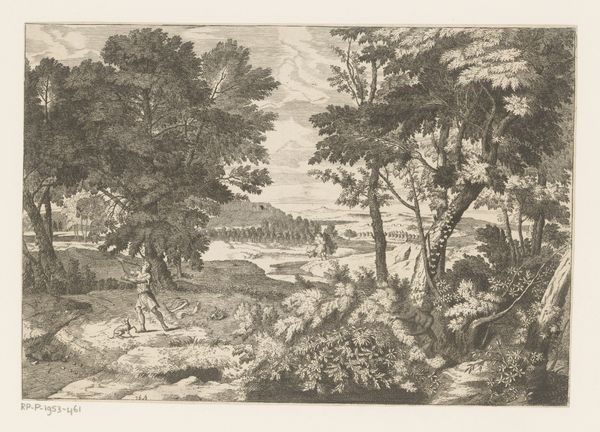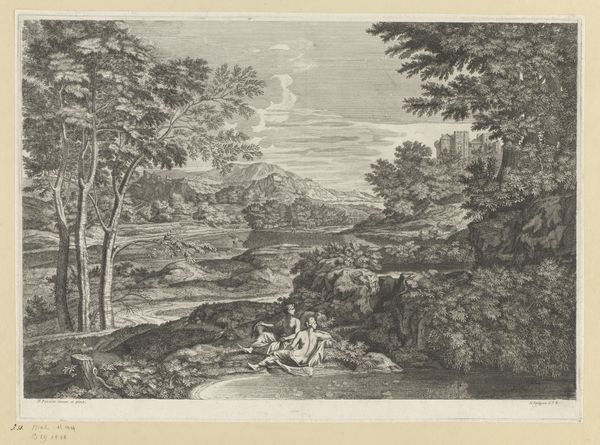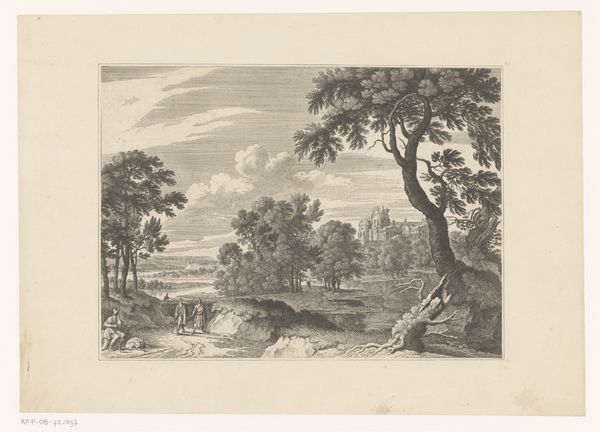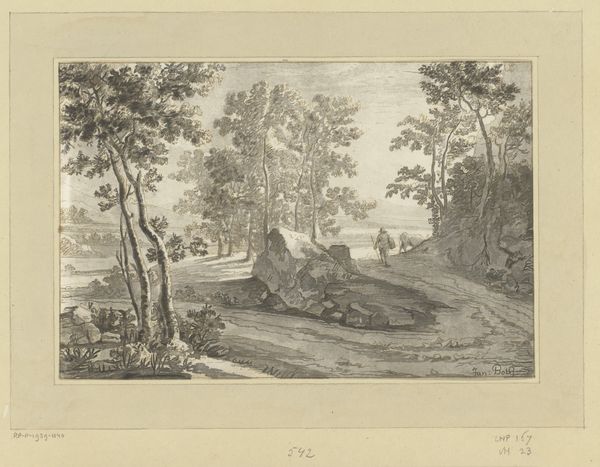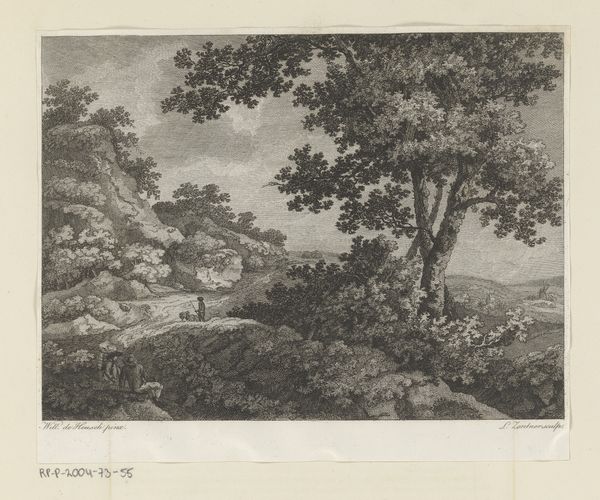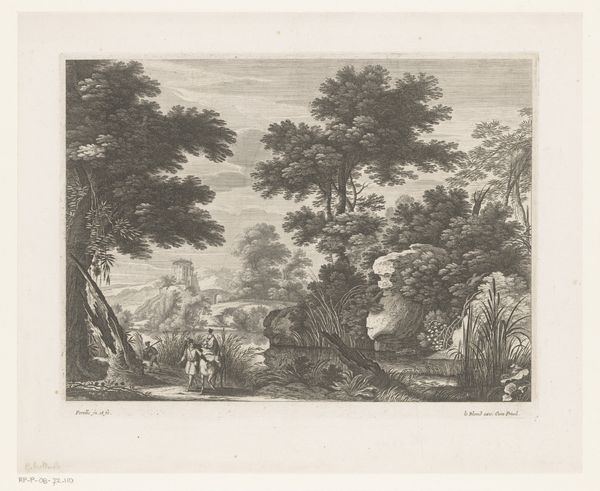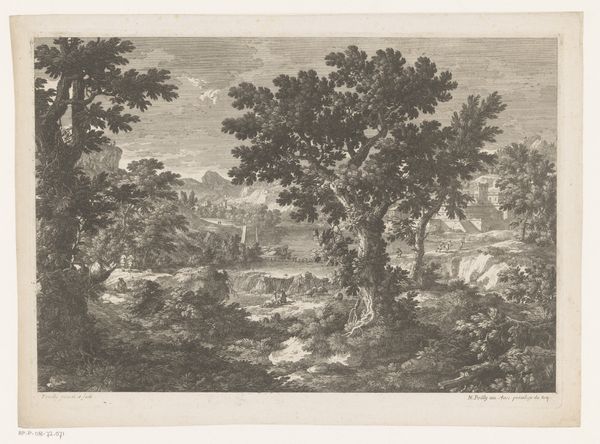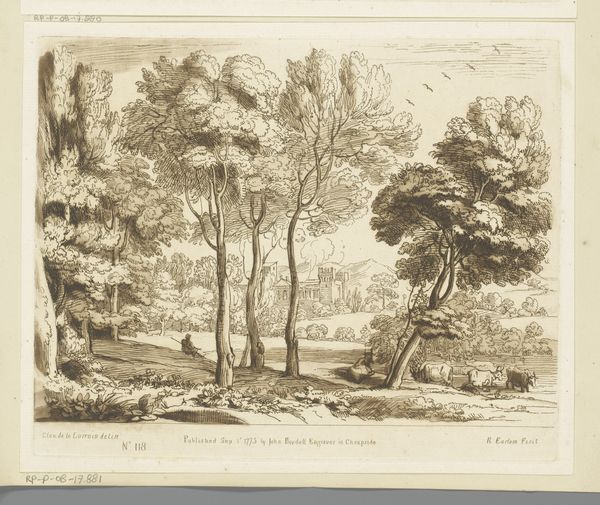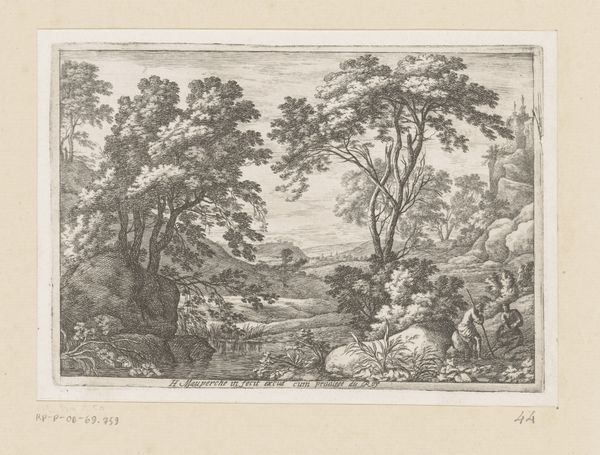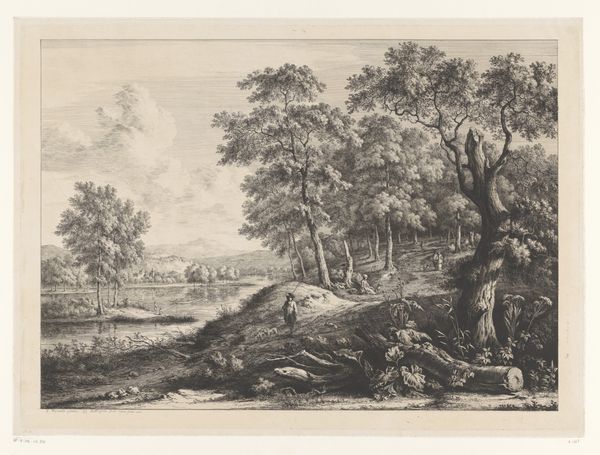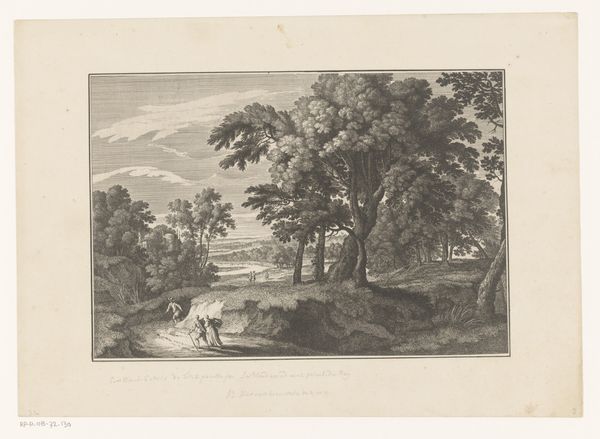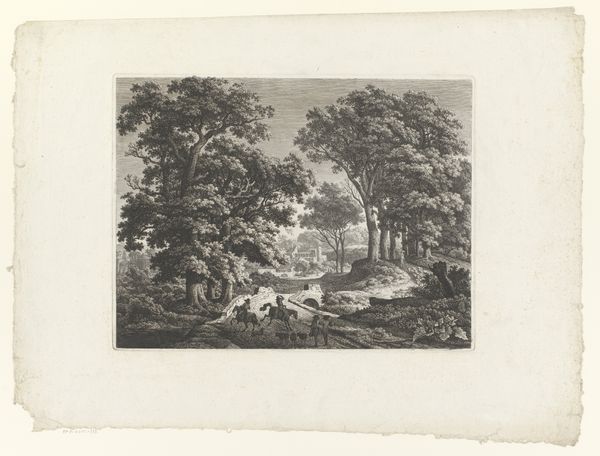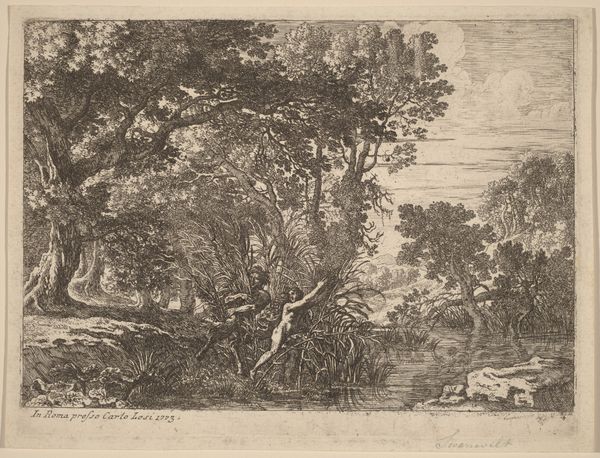
print, etching, engraving
#
baroque
# print
#
etching
#
landscape
#
river
#
engraving
Dimensions: height 271 mm, width 356 mm
Copyright: Rijks Museum: Open Domain
This landscape scene was etched by Georges Focus sometime between 1641 and 1708. The process of etching involves coating a metal plate with a waxy ground, and then drawing an image through it with a sharp needle, exposing the metal. The plate is then immersed in acid, which bites into the exposed lines, creating grooves. The beauty of etching lies in its capacity to convey fine detail and tonal variation. Focus’s work presents us with an idyllic scene. The lines vary in thickness and density, creating a sense of depth and atmosphere. Look closely, and you can see how he has used hatching and cross-hatching to build up shadows and textures, giving a tactile quality to the trees and foliage. But the image isn’t just a depiction of nature. It’s also a testament to the labour involved in extracting resources from the environment. In the foreground, we see figures engaged in the act of fishing, their nets cast into the water. Focus reminds us of the intrinsic link between human activity and the natural world. Etchings like this one invite us to consider the role of art in representing labour and the environment.
Comments
No comments
Be the first to comment and join the conversation on the ultimate creative platform.

